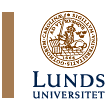

|
Panel No. 7Panel Title: Social and Political Implications of Economic Liberalization in South AsiaConvenor: S.T.
Hettige, Dept of Sociology, University of Colombo, Sri Lanka Wednesday 7 July, 8–12 Panel Abstract: The wave of economic
liberalization that has sweft across South Asia over the last two
decades has not only altered economic structures in several countries
in the region but has resulted in significant social structural
changes there as well. The changes in occupational structures, formation
of new classes, status and ideological groups, increasing spatial
mobility of people and labour and rapidly changing life-styles and
consumption patterns are some of the phenomena associated with the
economic and social structural changes. Read
the convenor’s panel report after the conference
Papers accepted for presentation in the panel:Paper Giver 1: Taberez Neyazi, Jawaharlal Nehru University, New Delhi, India Paper 1 Title: Political Economy of Foreign Direct Investment: A Case of Orissa Paper Abstract: Since the liberalisation of
Indian economy in 1991 states have been conferred considerable freedom
in the matter of economic policy. The earlier centrally planned
economy has given way to a federal market economy where states enjoy
larger share in economic sovereignty. Government of Orissa has also
taken the advantages of new opportunities and designed polices in
such a way to attract foreign investment and forge ahead with its
policy of economic reforms. Though the State Government is determined
to take full advantage of the sweeping changes in the national and
international scenario and forge ahead with its programme of economic
reforms by removing bottlenecks to shackle the vicious circle of
backwardness which has plagued Orissa since independence, but there
is no respite form the old image of Orissa as backward and underdeveloped
region in India and the total inflow of foreign investment is meager
compared to other states. Its because as pointed out by Pederson
(2000), sustainability of any reforms or policies depends upon the
support provided by the matrix of forces operating in every society.
Thus the state is “embedded” in and reflects the configuration
of articulated interests in its own society. Therefore, it may be
possible on the part of the state to autonomously initiate a substantial
reform measures or at the behest of foreign agencies, but it would
be successful only when supported by strong and organized social
interests. Paper Giver 2: Shanta Wanninayake, Ph.D. Student, Dept. of Peace and Development Research, University of Göteborg,Sweden Paper 2 Title: Economic Liberation and Labour Migration in Sri Lanka Paper Abstract: The migration for the employment
from Sri Lanka to Middle Eastern countries began in the period just
before the free-market economy was introduced in Sri Lanka in 1970s.
The early migration to the Middle East was an ad hoc programme,
and statistics were not fully available on the nature of migrant
people during this period. According to official sources the flow
of migrant workers from low-income countries to high-income countries
and regions accelerated in the 1980s and early 1990s. Particularly,
after the free market economy introduced to Sri Lanka, the women
migration has started to increased (Fernando 1998). Paper Giver 3: Lynne Ciochetto, Massy University, New Zealand Paper 3 Title: Advertising and globalisation in India Paper Abstract: This study explores the profile
of contemporary advertising in India in the wider context of trends
in international advertising, the recent changes in Indian economy
and society, and issues concerning the cultural impact foreign advertising
in India. Findings are illustrated through a case study of outdoor
advertising collected in two visits to India in 2000/2001 and Full paper to be downloaded (as a pdf-file) Paper Giver 4: Jonathan Pattenden, Department of Development Studies, SOAS, London, UK Paper 4 Title: Globalization and Rural Agriculture in India Paper Abstract: N.A. Paper Giver 5: Elvira Graner, South Asia Institute, Heidelberg University, Germany Paper 5 Title: Labour Migration within and from Nepal. Analyzing “fragmentating developments“ Paper Abstract: The global division of labour
is an often discussed issue among various social sciences. While
some scholars point out the “win-win” situation of various
actors involved, others, as for instance Bolaria, rather indicate
the ephemeral nature of such”integration”. Similarly,
Fred Scholz, one of the most renowned geographers working on development
issues, has recently suggested what he calls “fragmentating
development”, where some places (regional focus) as well as
some groups (social focus) are being integrated into what is generally
called the “global economy”. Yet, he points out to particular
patterns of this integration, and raises questions about “sustainability”.
Paper Giver 6: Siri Hettige, Department of Sociology, University of Colombo, Sri Lanka Paper 6 Title: From Social Justice to Market Competition: Impact of Globalization on Education in Sri Lanka Paper Abstract: Provision of education at all
levels remained a virtual state monopoly in Sri Lanka for several
decades from the early 1940’s. Rapid expansion of the formal
education system in the recent past and the emergent policy regimes
that discouraged private sector involvement in education did not
leave much room for the emergence of a parallel system of private
education. Full paper to be downloaded (as a pdf-file) Paper Giver 7: Ravi Raman, Institute of Development Studies, Thiruvananthapuram, India Paper 7 Title: Politics of Policy Reforms in south India: Kerala Model Paper Abstract: the southernmost state in india, Kerala,
has been a subject of academic analysis down the years. This owes
largely to the remarkable levels of social achievement – universal
literacy, low mortality, low child mortality, and high life expectancy
at birth social security net works – attained by the state,
which is even comparable to the west. But the neo- liberal reforms
in the crucial sectors such as public resources, power, urban development,
Environmental improvement and poverty reduction with ADB policy
loan has brought into focus mixed responses.
Full paper to be downloaded (as a pdf-file) Paper Giver 8: Mallika Shakya, London School of Economics and Politics, UK Paper 8 Title: Role of Cultural Capital in the Globalised Industries in Nepal Paper Abstract: Globalization has brought with it a remarkable
convergence of institutions and policies, yet the opportunities
and challenges for one ethnic /cultural group vary enormously from
those of others. My study of the ready-made garment manufacturers
in Nepal brings forward the role of cultural capital in explaining
such differences. The terms consists of (i) knowledge of production,
(ii) business organization skills and (iii) commercial networks
developed over generations, often seen to spread through family
and kin-based institutions, as opposed to those acquired over a
period of five years in formal educational institutions.
My research brings forth a number of policy implications for developing countries. It brings forth that what is needed is not protection of one faction of industry over another, but the integration of the success factors from the micro-level studies into a wider picture in which cultural capital seen in a dynamic and interactive way, is one important factor among many others. The lies in carrying out cautious, case-by-case analysis of strengths and weaknesses of local industries against the broader global scenario, rather than through haphazard imitation of macro models, be it towards globalisation or against. Full paper to be downloaded (as a pdf-file) Paper Giver 9 : Alina M Zapalsa, Marshall University, USA & Wali M. Mondal, Redlands University, USA Paper 9 Title: Micro-credit and Micro-entrepreneurship in Bangladesh economy Paper Abstract: the purpose of this paper is to analyze common characteristics of family owned and operated entrepreneurial businesses in Bangladesh to suggest that entrepreneurs having these characteristics have a probability of success as entrepreneurs. The Kazanjian model is used to examine how environmental conditions influence development and growth of entrepreneurial activities in family operated small businesses. The goal is to identify and describe the environmental factors that have major impact on the development of family businesses in Bangladesh’s economy. The paper recognizes that Bangladesh’s economy is not the same as the other economies in the region. As it represents a perfect example of how poverty can be alleviated with the use of “micro-credit”. The paper also focuses on the social cognitive variables that may meditate the impact of the environmental focuses on entrepreneurial development to suggest new directions for future research and practice. Paper Giver 10: S.K. Mohanty & Nizammudin Khan, International Institute for population sciences, Mumbai, India Paper 10 Title: Impact of economic reform on employment structure in urban India Paper Abstract: Indian economy had experienced major policy
changes in early 190s to improve the working f he economy. The new
economic reform, popularly known as, liberalization, privatization
and globalization (LPG model) aimed at making the Indian economy
more efficient and globally competitive. As a result the economy
had experienced about 6% growth rate in GDP in 1990’s, foreign
exchange reserve exceeded 100 billion US Dollars (as of December
2003) and India became the 10th fastest growing economy in recent
years. However, all these feel good factors failed in growth of
employment. Full paper to be downloaded (as a pdf-file) Paper Giver 11: V. Upadhyay, Indian Institute of Technology, New Delhi, India, and Arvind Chaturvedi, Institute of Management Technology, Ghaziabad, India Paper 11 Title: India’s Economic Reforms: Impact on Poverty Paper Abstract: India adopted economic planning in
1952. Even after nearly four decades , in 1991, when
planning did not yield considerable economic progress and development,
economic reform process was set in motion. Since then the
policies of Liberalization, Privatization and Globalization (LPG)
have been followed by various governments with
varied pace. The reform process has shown significant improvements
in all spheres of economy with impact of different degree
in different sectors. Full paper to be downloaded (as a pdf-file)
Panel report:
|

